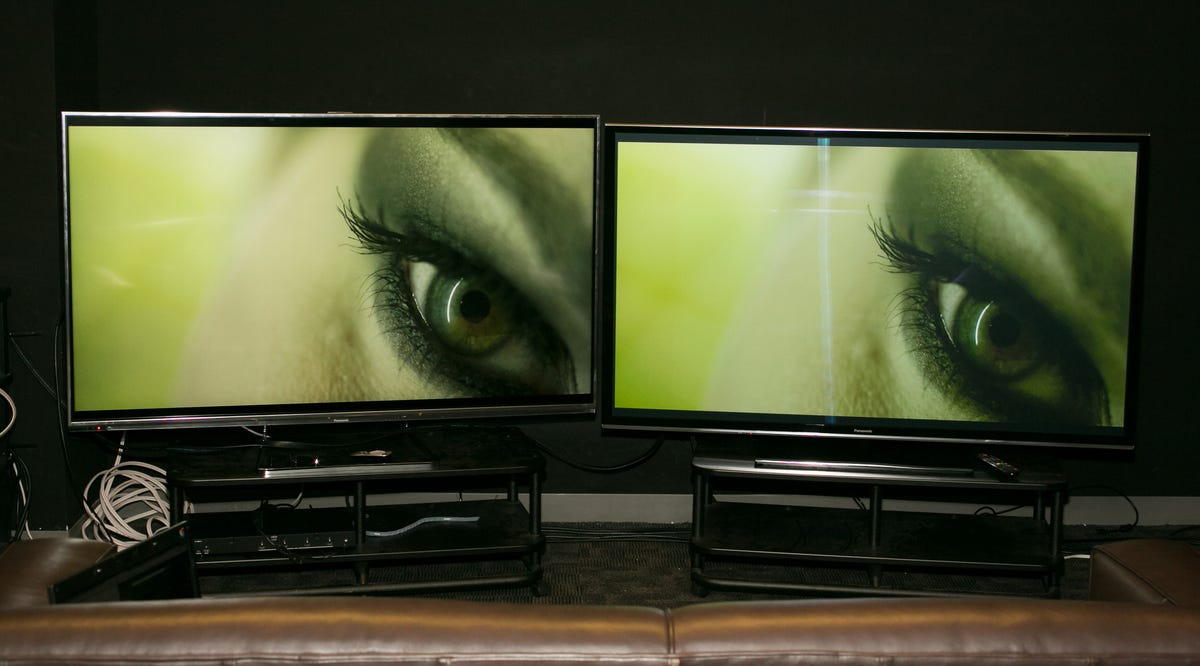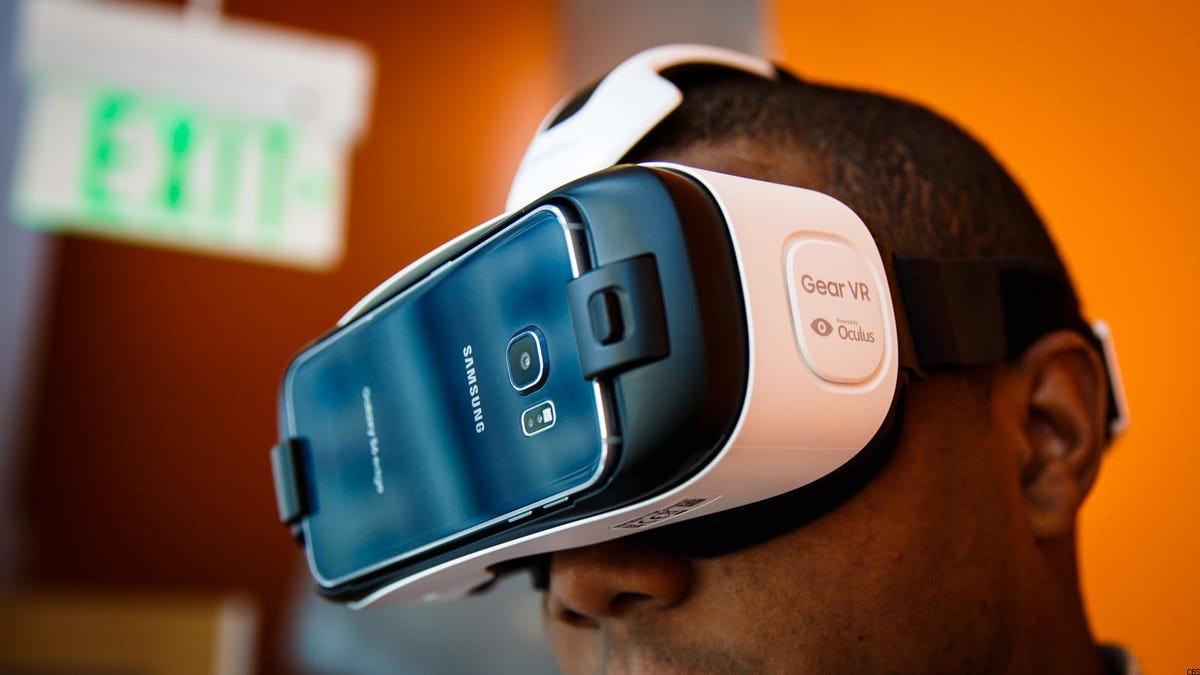Sony’s Xperia Z5 Premium smartphone is the first handset to use the same sky-high screen resolution as some of the most expensive TVs out there. That sounds impressive, but despite claims from Sony and others, 4K resolution on a phone-sized screen isn’t going to produce a drastically sharper, clearer image for viewing text, photos and videos.
In fact, your eyes probably won’t even be able to tell the difference.
A 4K smartphone seems like an inevitable evolution in the industry, as engineers continue to improve the performance of shrunken internal components like camera sensors and computing processors. Phone-makers that implement the newest advancements snare bragging rights and lure buyers with claims of their products’ superiority. For Sony, being the first with a 4K display will likely earn it credibility with some users and prod other phone-makers to introduce their own 4K phones in order to keep up.
There’s just one problem: We don’t find 4K necessarily beneficial on a 65-inch TV, so it stands to reason it’ll be even less meaningful on a 5.5-inch phone screen. (Note: CNET has gone hands-on with Sony’s latest phone, but we haven’t had a chance to review it or compare it to other phones in depth.)
Related stories
- 4K TV facts you must know
- Hands-on with Sony’s Xperia Z5 Premium phone
- Sony Xperia Z5 Premium specs vs. the competition
For die-hard lovers of large-screen, bleeding-edge advancement for its own sake, 4K resolution on a phone is probably seen as a welcome next step. And we aren’t saying that ultra high screen resolution on a relatively tiny display is bad or wrong. It probably won’t hurt the screen’s fidelity, and it won’t damage your eyes. On the other hand, in our book it’s hardly worth paying extra for.
But before you take a stance one way or another, let’s consider what we already know about 4K resolution on TVs and current state-of-the-art resolution (2,560×1,440 pixels) on smartphones — and the niche segment where 4K might actually make a real difference.
What does 4K mean?
4K specifies a screen with four times the number of pixels as standard HDTV and phone screens, which have 1080p resolution. A pixel is a block of light that makes up the display’s smallest unit of white or color. Think of a pixel as a brick in the wall that is the screen.
A 4K “wall” has 3,840 bricks along the top row, compared to 1,920 bricks for one row of a 1080p wall, and 4K also has twice as many rows. Despite all those extra bricks in a 4K wall, however, each one is so small that to most viewers with normal 20/20 vision at most normal viewing distances, they don’t add up to a sharper-looking mural. Er, picture.


Seen side by side, it’s very difficult to tell a 4K TV from a 1080p one.
Sarah Tew/CNET
A 4K TV isn’t necessarily a ‘sharper’ TV
4K doesn’t always live up to its promise of super-crisp resolution and crystal clear detail even on a really big TV. We’ve spent many hours over the last couple of years directly comparing 65-inch 4K TVs to their 65-inch 1080p counterparts. The TVs were compared from very close seating distances, between 7 and 8 feet away. That’s quite a bit closer than most owners of big TVs sit, and on the brink of too close for comfort for many people.
Despite sitting so close to all the extra pixels in the 4K TV’s panel, in most scenes we didn’t notice any difference at all. What details did pop out were small improvements in close-ups (say, on a blade of grass or flower pollen caught on a bee’s leg) from the very best, carefully curated footage used to demonstrate 4K’s resolution advantage.
The best example of 4K’s resolution we’ve seen was on very big screens. Sitting about 9 feet from a 120-inch screen, we compared a 4K projector (also a Sony, for what it’s worth) to a pair of units with 1080p resolution. In most movies we watched the differences were nonexistent, but in one we actually did see a bit of extra sharpness. So yes, with absolutely gigantic screens, 4K makes more sense.
The advantage of 4K also appears in stills, where the eye can linger on an image to pinpoint detail and volley back and forth to compare the competing resolutions. During moving TV shows and films, though, the eye loses some of its ability to track fine details, so your TV’s pixel resolution matters even less for this purpose.

 Enlarge Image
Enlarge ImageSeen side by side, details in phone screens are tough to discern as well.
Lori Grunin/CNET
Resolutions max out on phones, too
Aside from sheer size, the biggest difference between phone and TV screens is that you typically view phones from much nearer. You can always hold the phone up to your face to look at small details, and when doing so, higher resolution has a real benefit. To a point.
We’ve scrutinized phones with 2K resolutions (2,560×1,440 pixels) like the 5.1-inch Samsung Galaxy S6, against other phones’ 5-inch screens with lower, 1,920×1,080-pixel displays. Even comparing the same high-definition images with high contrast ranges on two phones, we often had to hunt for slight differences in sharpness and clarity between the two, and at a much closer range than most people view their phone — mere inches away from the face.
Even when we look very closely at a large-screen device like the 5.7-inch Samsung Galaxy Note 4 (which has a 2,560×1,440-pixel screen), it’s almost impossible to see the phone’s basic pixel structure at all. Put your nose (or better, a magnifying glass) up to any screen and you can usually see a grid formed of the spaces between the pixels. That structure is almost impossible to discern even from very close-up on today’s state-of-the-art, non-4K phone screens.
With differences between sub-4K screens already so difficult to appreciate, it’s hard to imagine what kind of benefit a 4K phone screen would bring to everyday phone use.

 Enlarge Image
Enlarge ImageA comparison of iPhone pixel density.
Nate Ralph/CNET
How many pixels are enough?
When we’re talking about screen resolutions and seeing pixel structure, what we’re really talking about is how many pixels are crammed into every inch of screen. Or, going back to the analogy above, how many bricks make up a particular-sized wall. The more pixels you have per inch, the more detailed the image can become. We call this pixel density.
Several pundits peg the ideal pixel density at 300 pixels per inch for people with 20/20 vision to make the most of a phone’s detail.
Late Apple CEO Steve Jobs was one of them. When Apple launched its “Retina Display” for the iPhone 4, Jobs made a lot of noise about the screen’s scientifically chosen pixel density. An Apple brand name for a certain type of screen, the iPhone 4’s Retina Display had a 960×640-pixel resolution on a 3.5-inch screen. Jobs crowed that this pixel density of 326ppi, or pixels per inch, meets the threshold at which the human eye can no longer perceive detail.
Not everyone agrees, and there have been many who have challenged this oft-quoted standard as myth, but the point is that the Sony Xperia Z5’s pixel density of 802ppi dwarfs the recommended 300ppi target.
What about battery life?
While Sony is promising the same “two-day battery life” as recent Xperia models, we have some doubts. All those extra pixels require power to light up, and that could impact battery life. In our experience with screens of all sizes, more pixels are more demanding on the processor and battery, because — to return again to our wall/mural analogy — you’re filling in more bricks at the same time to create a more detailed image.
True, there are tricks companies can do to balance battery life and power demands, like shrink other components to use a bigger battery, or lean on other, more energy-efficient materials to make gains elsewhere.
Either way, if it comes down to more battery life or a little extra resolution, power wins every time.


VR glasses that use phones could benefit from 4K resolution screens.
Josh Miller/CNET
The exception: Virtual reality
We do see one area where 4K on phones would be potentially useful, and that’s for virtual reality, or VR, devices where the images on the phone screen are what powers the whole experience. Google Cardboard and Samsung Gear VR -style virtual reality goggles or headsets place the screen about an inch from your eyes. At such close range, your peepers could actually tell the difference.
However, after testing a range of VR systems that include Cardboard and Gear VR as well as Oculus Rift, Microsoft HoloLens and HTC Vive, the latter rigs — which come with their own screens — also happen to provide the more immersive and flexible virtual reality. As it stands now, phone-powered systems will work in a pinch. If the popularity of this type of VR headset grows, that would make higher resolution phone screens valuable.
For now, though, it’s a fringe case.
Inevitable, but not indispensable
The high resolutions on TVs largely don’t matter much, and the same goes for today’s 2K smartphones. Sony isn’t making a grievous mistake in outfitting its phone with a 4K screen, especially with competitive pricing compared to phones with lower resolution displays.
We’re also not saying to avoid the Sony Xperia Z5 Premium. Its hardware is as high-powered as we’d expect for a pedigree device, and that isn’t just in the display department.
Here’s what we are saying: Enjoy this phone, and other future phones that happen to have 4K screens, for the wonderful performance and photos they can create. Just save the bulk of your oohs and ahs for the smartphone features — like the Xperia Z5 Premium’s terrific camera sensor — that have more real-world clout.
For the best of IFA 2015, see CNET’s complete coverage.



